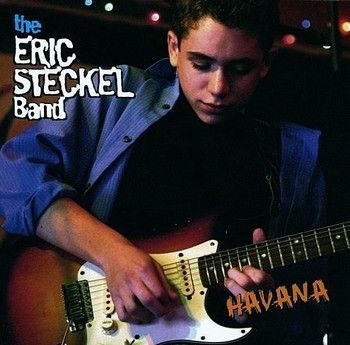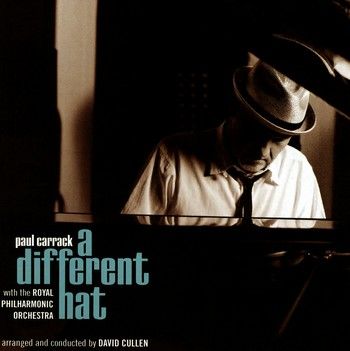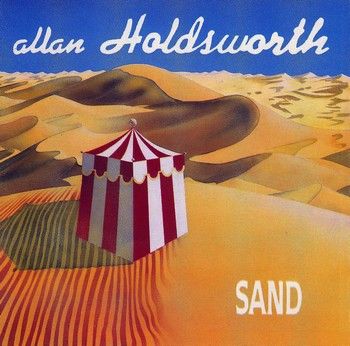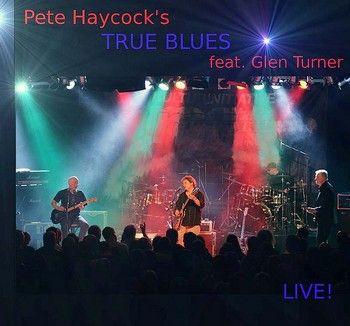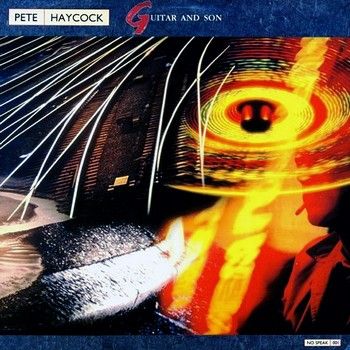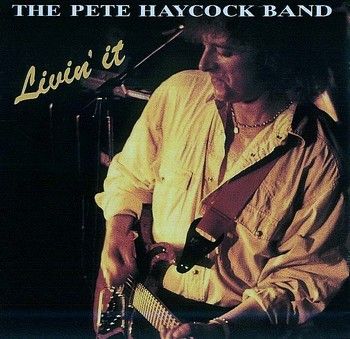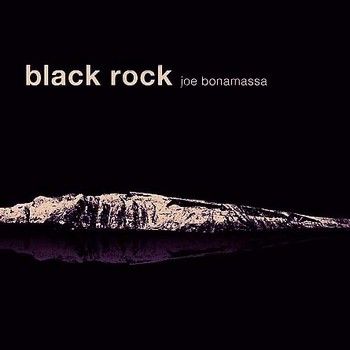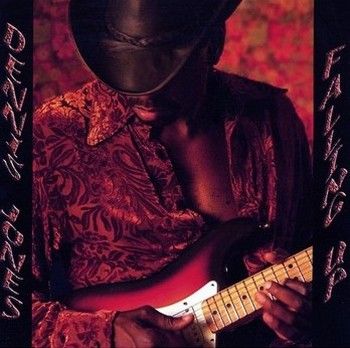
Dennis began playing in his early teens in Baltimore County, Maryland and played guitar in several cover and original bands. He later moved to Europe for a few years and played with some notable blues and R&B bands. For over ten years the Dennis Jones Band has played many blues clubs and festivals throughout the US. "Falling Up" is a blend of electric and acoustic blues with elements of rock, jazz and country. The album is full of expressive vocals and heartfelt lyrics matched with a line up of highly talented musicians. Dennis' playing will remind you of some of today's best and most exciting blues guitarists.
For a debut release, Dennis Jones sounds as though he's been getting it done for years. A fortyish guitarist/vocalist and a veteran of Southern California clubs, he has this blues thing down pat. From a line up of mostly self penned tunes, he fashions an eminently listenable platter steeped in popular urban, country, jazz and rock sounds. He's the rare newcomer to recording who displays mastery over his musical _expression without resorting to bombart, flash, fury or histrionics. Jones possesses a confident, smoky midrange voice and shows a deft touch on both acoustic and electric guitar. The title tune spreads a soft, buttery acoustic guitar around a swaying, syncopated rhythm. There's just a taste of acoustic bottleneck or slide on "Yesterday Blues" and "Chevrolet" (the old Ed and Lonnie Young tune) wouldn't suffer by comparison with the version Taj Mahal released in the '70s. "Big Black Cat" and "I Have You" have an urban electric quality not unlike that of Joe Louis Walker. The former is framed by a tidy harmonica accompaniment, the latter harks of George Benson chord changes and sensibilities. "You Don't Know a Thing About Love" is a soft rocker graced by a soulful vocal backing chorus, with Jones furnishing acoustic and electric guitar tracks. "The N Word" isn't what one might suppose; rather it's a country-tinged lament about a girl who evidently can say "No". "Fresh Out of Love" is something of a smooth operator's equivalent of a full disclosure policy statement. The man also has a bit of a muse in him. "Deep Blues", for instance, has a nice acoustic picking and strumming passage at each stanza's outset and a pensive lyric: "Don't know how I got here/Down which road I came/Been in a deep blues so long/Each direction looks the same". "Pray Your Life Away" advocates hedonism. Jones: "Don't you pray your life away/Live each day like it's gonna be your last". Jones surrounds himself with veteran musicians who work the same Los Angeles territory. "Falling Up" makes a compelling argument that his recording career has already hit it's mid-race stride.
© M.E. Travaglini - Blues Revue Magazine
My name is Brett Fleming and I met you at the IBC in January. I was the time keeper at the Hard Rock and also do a blues radio show on WEVL 89.9 FM in Memphis. You kindly gave me a copy of "Falling Up" when you and Dug were walking down Beale Street on Friday night. I have listened to it several times and featured it two weeks ago on my show. I am sincere when I say it is one of the best albums I've heard in the past 2 or 3 years. Having heard you play with Zac's band I knew you were an excellent player, but didn't know how good you are vocally as well as being a fine songwriter. I had several calls from listeners commenting about the disc, particularly "You Don't Know A Thing About Love" which is a terrific song. But it's difficult for me to pick a favorite from among the tracks; all of them are good!! I also wanted to congratulate you and the rest of the band for winning the IBC. Good luck and I look forward to hearing from you. Say hello to the others in the band and I will see you at the Handy Awards!! © Brett Fleming - WEVL 89.9 FM (Sep 30, 2005)
When asked in an interview "To give one wish for the blues", Dennis replied. "Blues is the core of most styles of American music, from surf to rockabilly, and even soul and funk. The blues is there. I wish the Blues would continue to mature and evolve, and not always rely upon what has already been done". He says, "I was a rock and roller as a kid, and playing some R&B mixed up with Rock and Roll. I went back and discovered where these rock and roll licks were coming from. As you dig deeper you go back to Son House and Robert Johnson and people like that." "…Motown, Country…its all Americana to me. I love blues and if I had only one style of music I could listen to, it would truly be the blues. But I've been influenced by so many things. I love American Roots music. I love Rockabilly, Brian Setzer. On the way here I was listening to some Dwight Yoakum. I love his first three albums, his songwriting…that's what I'm talking about, songwriting. Lucinda Williams, great lyrics. I love things that touch me inside, not just the visual. They've got to deliver something." "I love Jeff Beck on a lot of his stuff. Some of the things he does…He's just a master of what ever he does. Even to this day he's unbelievable. Just unbelievable! I guess some of the early Fleetwood Mac, before they became a pop band. I wasn't really a big Clapton fan, because at the time when Jimi was alive, not many other players existed to me. He was just so far ahead of everybody else." Over the years, Dennis has sat in with such artists as Guitar Shorty, Kenny Neal, Deborah Coleman, Chris Duarte and many more. “Falling Up” consists of blues, blues rock and includes flavours of country, R & B and jazz. This CD was critically acclaimed on it's release. Memphis’ WEVL FM 90 called “Falling Up”, “one of the best albums we’ve heard in years”. Listen to Dennis' "Passion For The Blues" album [All tracks @ 320 Kbps: File size = 110 Mb]
TRACKS
1. Falling Up 3:40
2. Yesterday Blues 3:46
3. Chevrolet 3:33
4. Big Black Cat 3:44
5. You Don't Know A Thing About Love 4:31
6. I Have You 4:21
7. Deep Blues 3:36
8. Stray Bullet 4:06
9. The 'N Word 4:39
10. Fresh Out Of Love 5:20
11. Pray Your Life Away 3:54
12. Crazy Over You 3:07
BAND
Dennis Jones - Guitar & Lead Vocals
Sam Correa - Bass & Vocals
Michael Turner - Drums & Vocals
BIO
Sizzling hot guitar solos. Smooth and soulful vocals. High-energy stage performance. Backed by a rhythm section that is second to none, this IS Dennis Jones. Check out a live show, and you’ll instantly agree, Dennis Jones’s band ROCKS the blues like NO other! With original songs, some of which are sure to become classics, Dennis’s feet are firmly rooted in the past, yet his heart and soul are connected to the present. He writes songs that seamlessly blend the best of both worlds, presenting a unique and contemporary style of American rock and blues. And unlike some others, he isn’t afraid to tackle the controversial issues of today. Dennis also writes songs for other notable artists, e.g. he wrote the song Temporary Man for Guitar Shorty’s 2010 Alligator release, Bare Knuckle. Since 2003, Dennis has released four successful albums on his own label, Blue Rock Records. Each and every one of these CDs has met with rave reviews. Many of his songs and CDs have hit the top 10 on the Blues Charts, including when his 3rd CD, Pleasure & Pain, ranked #2 of best blues CD releases of the year, by the Canadian-based, Real Blues Magazine. The newly released CD, My Kinda Blues, features legendary guest musicians, Kenny Neal, and Guitar Shorty.Dennis is no stranger to film either. Deep Blues from his first CD, Falling Up, was featured in a 2006 Lions Gate movie, Sea of Fear. The title track of Dennis’s 2nd CD, Passion for the Blues, will be in the soon to be released independent film, How We Got Away With It. Finally, Dennis is one of several artists featured in the much-anticipated Babe’s & Ricky’s Inn, a movie about one of the oldest blues clubs in Los Angeles, and its adored owner.The blues music industry is taking note. In May 2012, Dennis was honored to present the Awards for BB King Entertainer of the Year, to Tab Benoit, and Album of the Year, to the Tedeschi Trucks Band, for Revelator, at the Blues Music Awards in Memphis, Tennessee.Dennis and his band continue to work hard to achieve the next level of musical success. Increased touring opportunities and greater exposure to new fans will undoubtedly make this band a household name. So if the same old blues has got you down, then it’s time to check out the Dennis Jones Band! Quick Facts about Dennis Jones…Born and raised in Baltimore County, Maryland. Began playing guitar at age 13.Influences include Jimmy Page, Jimi Hendrix, BB King, Albert King. Lived + played in Europe in his late teens, where his musical tastes further developed. Front man of Dennis Jones Band since 1996. Stint with Brian O’Neal and the BusBoys, 2001-2003. Won the International Blues Competition, Memphis, 2004, as part of Zac Harmon’s band. Special guest on Legendary Rhythm & Blues Cruise, Pacific, October 2010. Produced 2011 DVD release, Live at the Temecula Theater. Award Presenter at the renowned Blues Music Awards in Memphis, TN, in 2012. Produced Four Shades of Blue at the New Daisy Theater on Beale St., Memphis, TN, in May 2012, featuring the Dennis Jones Band, Zac Harmon, Eddie Turner, and special guest, Lazy Lester. Opened for such greats as Johnny Winter, Dick Dale, and the Experience Hendrix Tour. Plays popular and respected blues festivals around the USA including Doheny, Long Beach, Irvine Lake, Paramount, Northern California, etc.Tours of Europe, including Italy, France, Germany, Austria, and Switzerland © 2013 Dennis Jones http://www.dennisjonescentral.com/
MORE
Blues guitarist Dennis Jones grew up in Baltimore County, Maryland in an area which he describes as the "boonies". As a young man, Dennis was exposed to many styles of music from Motown and Gospel to Rock & Roll and R&B. Dennis first desired to play drums, but his parents thought that they would be too loud. So when he was 13 he asked for a guitar, two years later he had a Marshall Stack in the living room at which point his parents thought maybe the drums weren’t so loud after all. Dennis has always enjoyed tweaking his guitars and amps in search of that magic tone. By the time Dennis was 15, he was playing in his first band with musicians 3 to 4 years older and with more experience, which made his playing mature even faster. His musical exposure was quite varied. He’d listen to artists from Al Green, James Brown to Santana and The Rolling Stones. As a teen his older brother introduced him to Bob Dylan, Jimi Hendrix and the Who. His major influences were what he affectionately refers to as the three "J’s" (Jimi Hendrix, Johnny Winter, Jimmy Page) and the three "K’s" – (B.B. King, Freddie King and Albert King). To this day, Dennis continues to be inspired by these legends. Dennis played guitar in several cover and original bands throughout his youth. For several years while stationed in Europe, he played with notable Blues and R&B bands. This was a great time in life where he got to meet people, experience new cultures and hone his skills. Dennis came back to the states in the early 80s and continued playing in mostly cover bands. In 1985, Dennis moved to Los Angeles where he played in a rock and funk band that was wooed by a few major labels. In the late Eighties, the music scene changed and so did his direction. Dennis decided to concentrate solely on the blues and began writing it and playing it and has continued ever since. Dennis started the Dennis Jones Band in the mid 90s while continuing with other musical opportunities on the side. During his journey he has played with the BusBoys and with Zac Harmon and the Mid South Blues Revue in which he was featured on Zac’s CD "Live At Babe & Ricky's" as well as co-writing a song on "The Blues According to Zacariah". Dennis had the distinct pleasure of performing with Zac Harmon when he won the 2004 International Blues Challenge Championship. Over the years, Dennis has sat in with such artists as Guitar Shorty, Kenny Neal, Deborah Coleman, Chris Duarte and many more. In 2004, Dennis released his debut CD "Falling Up" (Blue Rock Records) produced by Brian O’Neal of the BusBoys. Dennis released his second CD, "Passion For The Blues" (Blue Rock Records) in 2006. Eight out of the ten tunes are penned by Dennis Jones. This CD has received great reviews and has been embraced by radio and fans as well. Life for Dennis Jones, as well as the Dennis Jones Band is shining bright. (quoted from Dennis Jones' page at myspace.com) © 2006-2009 BluesSearchEngine.com


